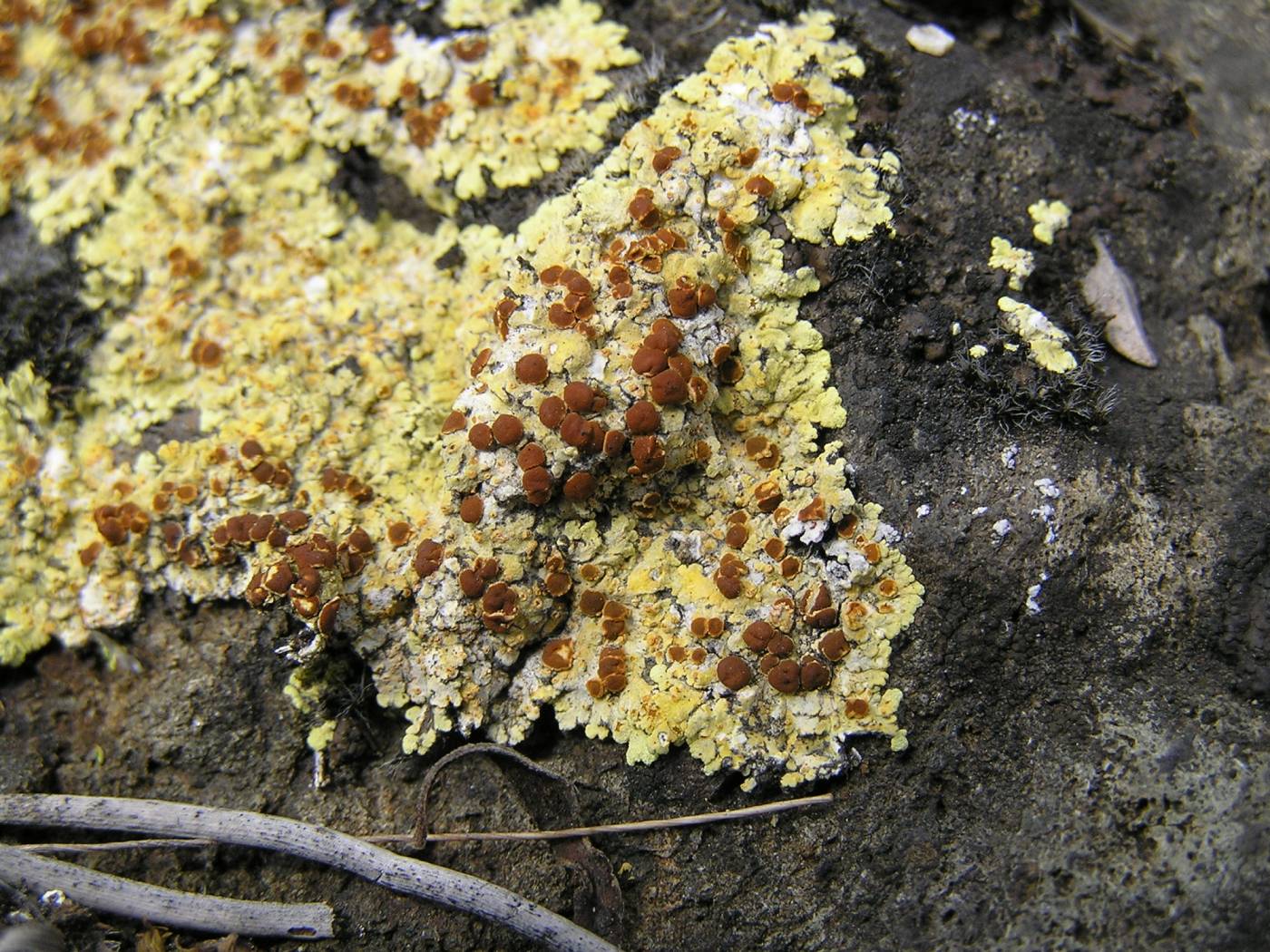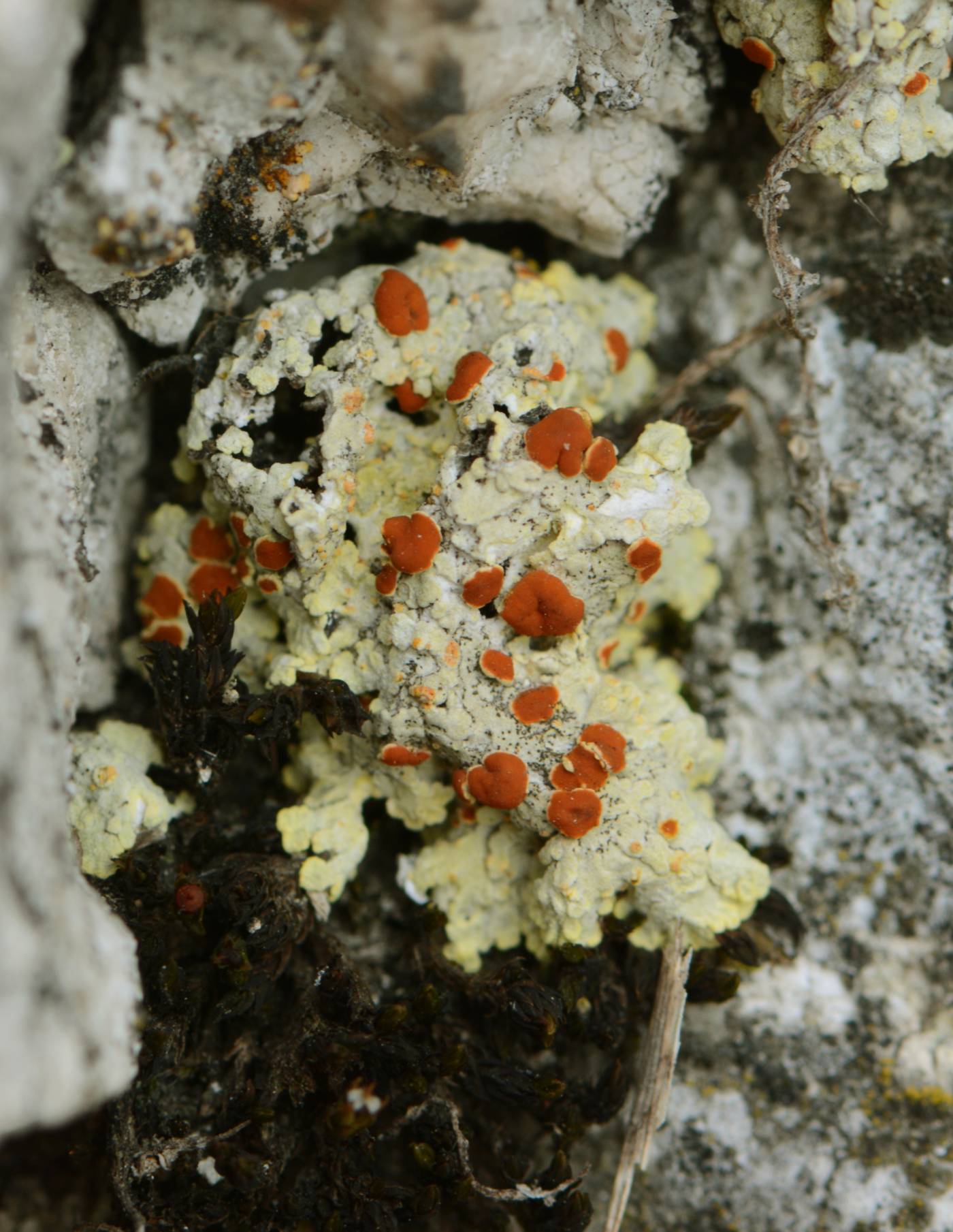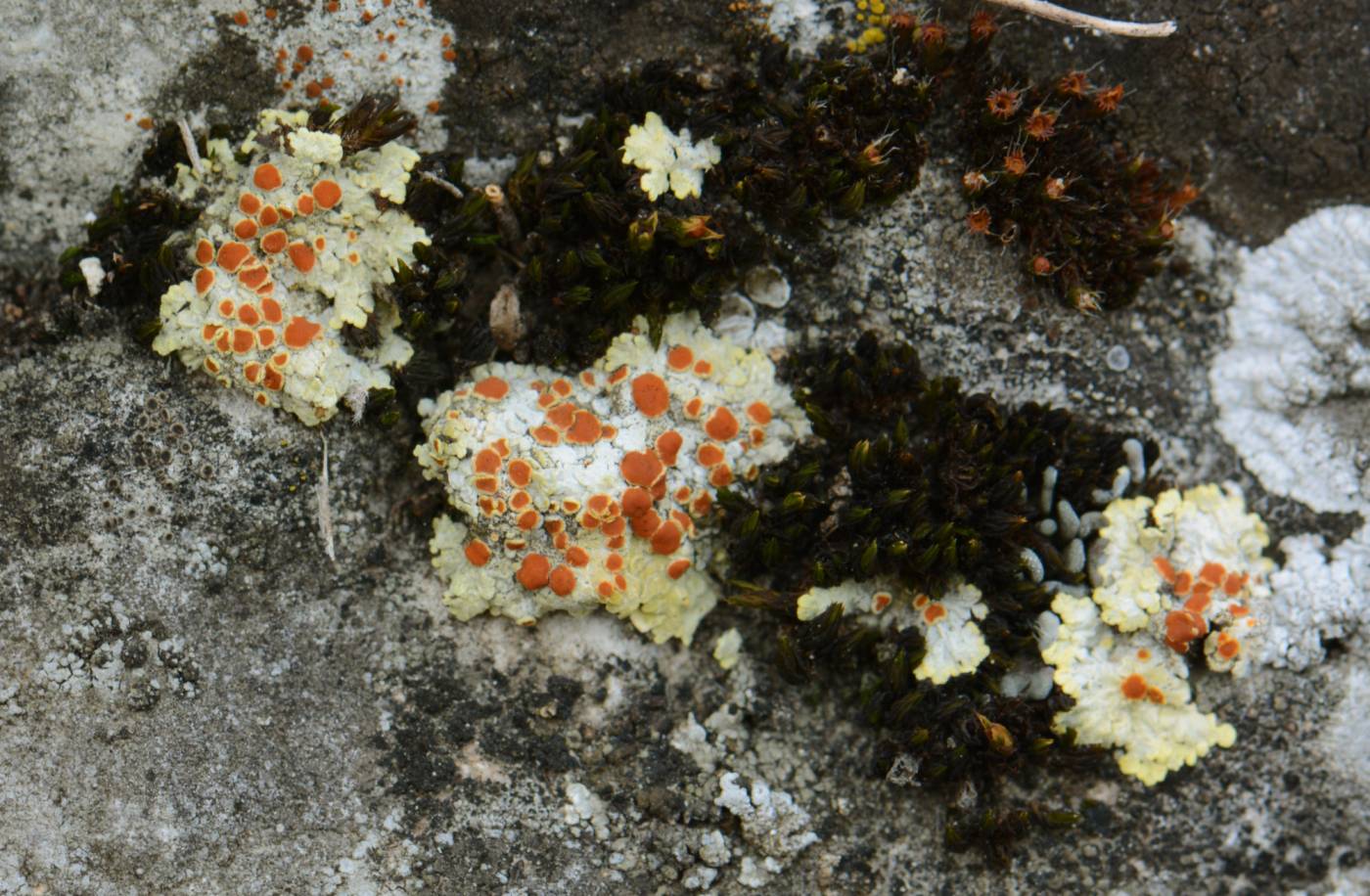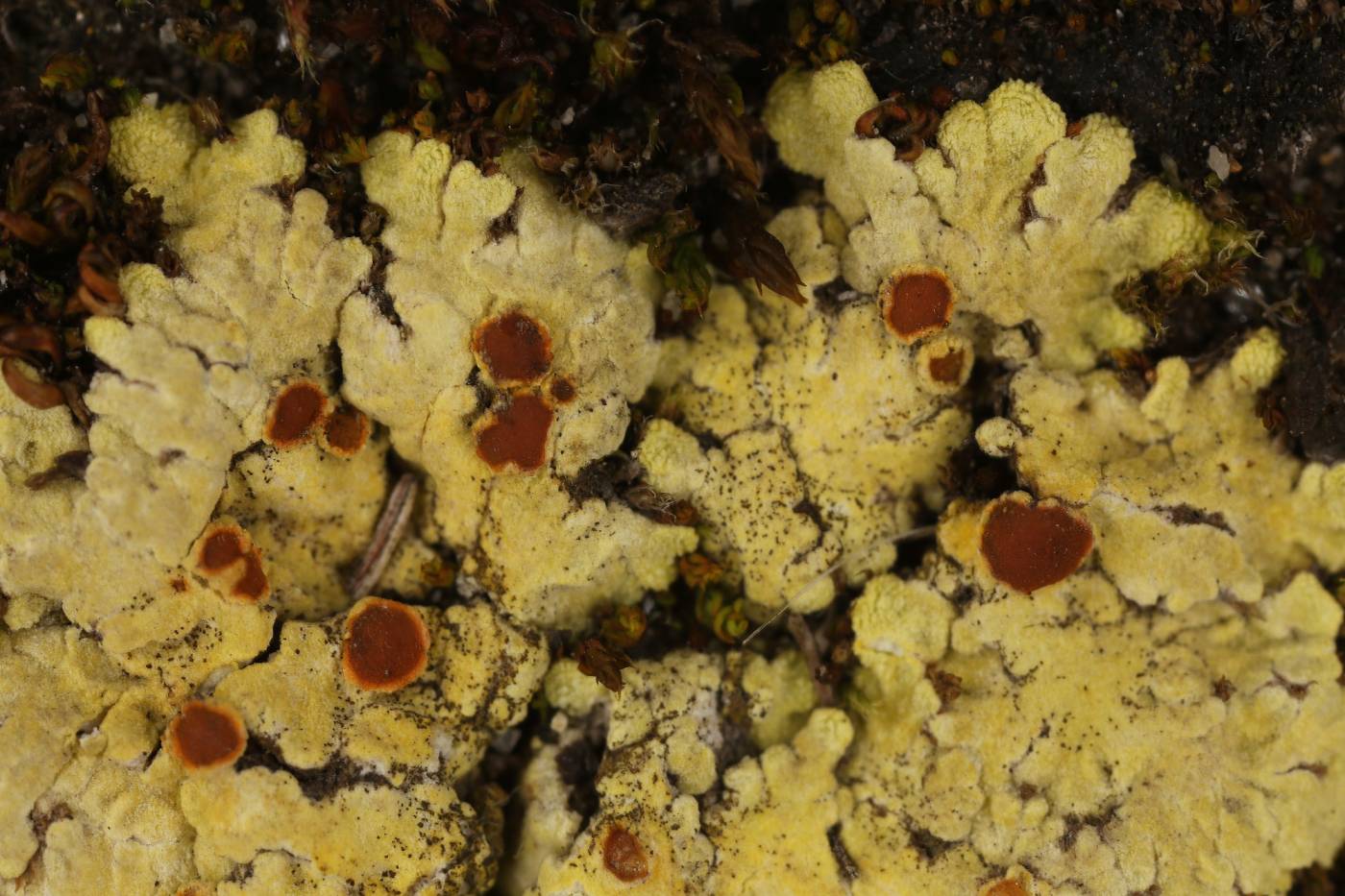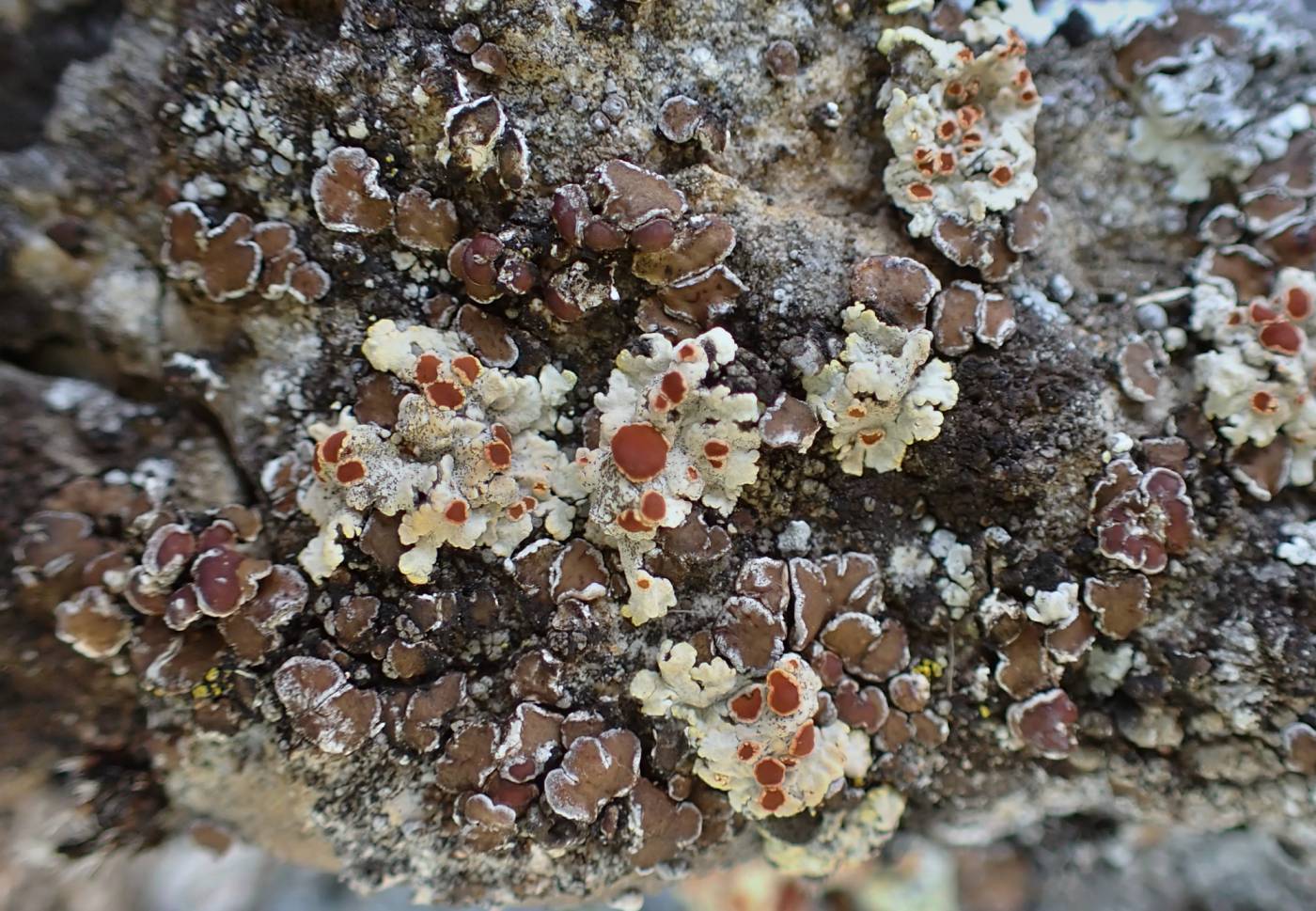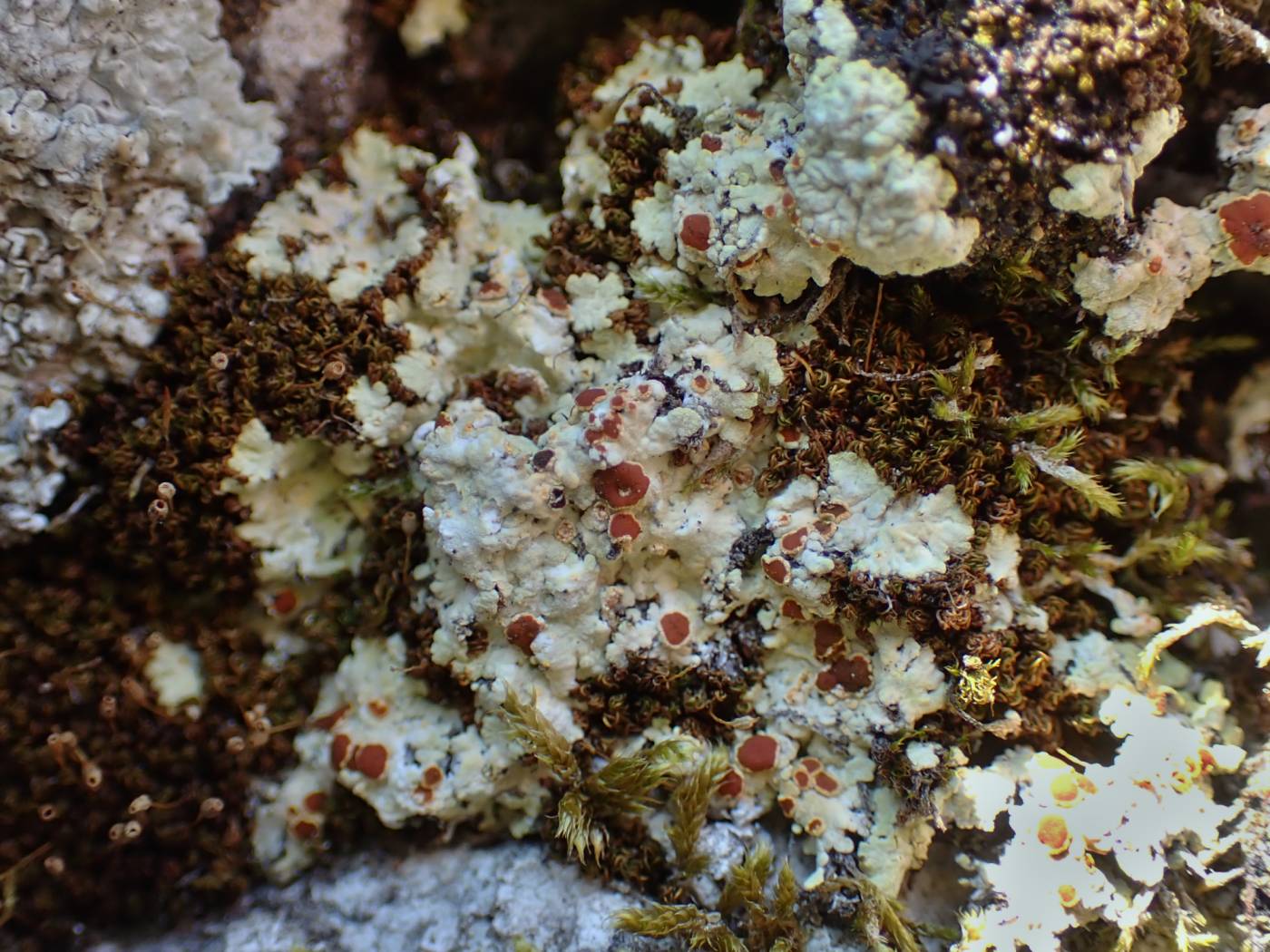A species characteristic for terricolous communities on disturbed calcareous soil and fissures in calcareous rocks. Sometimes it also overgrows mosses. Fulgensia fulgens usually occurs in steppe grasslands, rocky steppes and quarries. Typical substrates of the lichen are limestone, diabase, marlite and loess. Its habitat is maintained by occasional disturbances (e.g. grazing, trampling, small soil erosions) or extreme edaphic conditions (e.g. soil drying, lack of nutrients). In the Czech Republic, the species prefers warmer sunny habitats. However, it can also appear at higher elevations. In Europe, it is abundant in the Mediterranean, towards the north its numbers gradually decrease. Fulgensia fulgens was more common in the Czech Republic in the past. Currently, it is relatively abundant only in two karst areas: Pálava and Český kras. Most historical records come from the České středohoří uplands and southern Moravia. Besides, there are few single localities in other areas. The populations are threatened by the succession, eutrophication, absence of suitable management and quarries recultivation.
Literature: Suza J. (1937): Pozoruhodné lišejníky československé xerothermní oblasti I. – Časopis Národního musea 111: 136–156. Suza J. (1942): Česká xerothermní oblast a lišejníky. – Věstník Královské české společnosti nauk 18 (1941): 1–38. Liška J. & Pišút I. (1995): Lišajníky. − In: Kotlaba F. [ed.], Červená kniha ohrozených a vzácnych druhov rastlín a živočíchov SR a ČR 4., Príroda, Bratislava, p. 120−156.
taxonomic classification:Ascomycota → Lecanoromycetes → Teloschistales → Teloschistaceae → Fulgensia
Red List (Liška & Palice 2010):EN – endangered
Red List (Malíček 2023):C2 – strongly endangered
Occurrence in the Czech Republic
All records: 37, confirmed 30. One click on a selected square displays particular record(s), including their source(s).
